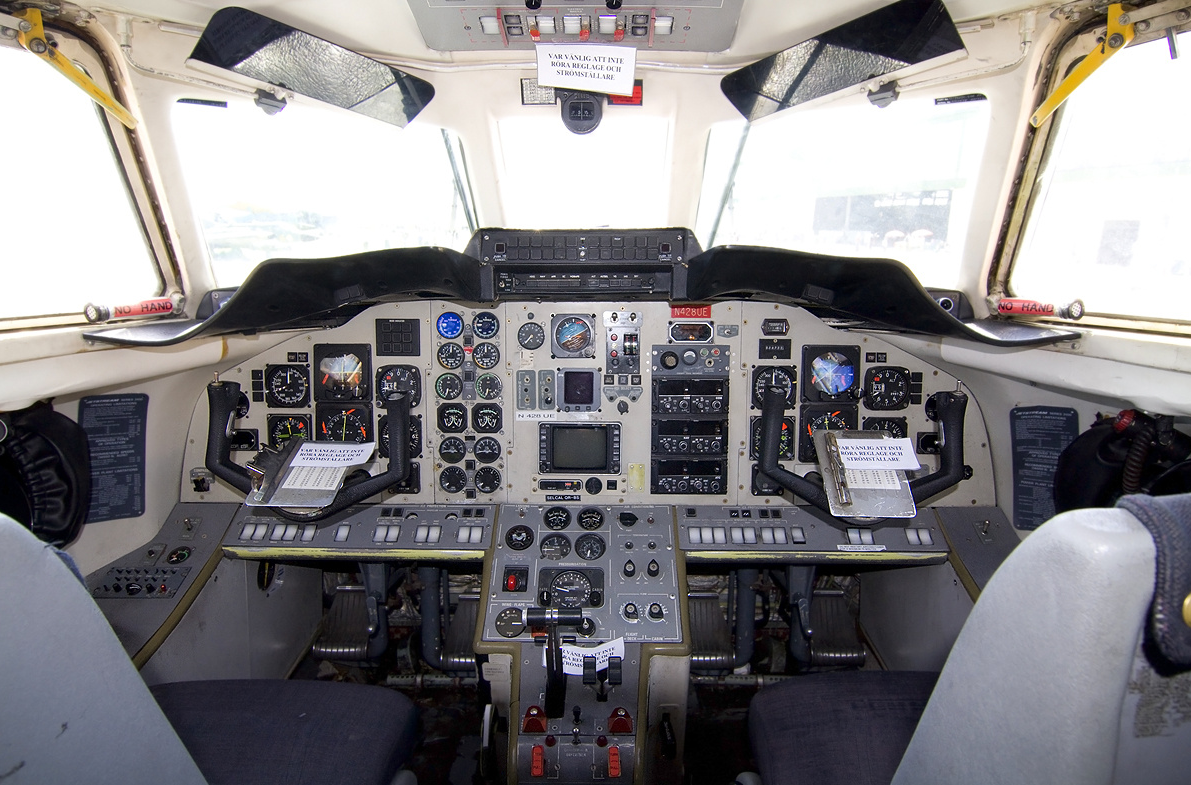


Aircraft Description
Background/History
The Jetstream 31 and the Jetstream 32 are twin engine turboprop airliners with tricycle landing gear. The Jetstream 31 entered service in 1982 and the increased power Jetstream 32 in 1988. BAE Systems completed an upgrade program for the Jetstream 32 resulting in the Jetstream 32EP (enhanced performance) aircraft, certificated in 1997, which has short field capability and hot and high operational performance. The original design used Turboméca Astazou XIV engines of approximately 840 hp, and flew on 18 August as the Handley Page Jetstream 1. The first production model Jetstream 1 flew on 6 December 1968, and over the next year 36 were delivered. Handley Page gave up on the original engine, and the Jetstream 2 was launched with the larger 965 hp Astazou XVI, starting deliveries in late 1969. Only three Jetstream 2s were completed before Handley Page went bankrupt, and the production line shut down in 1970. A group of investors, and Scottish Aviation formed a company Jetstream Aircraft to produce the aircraft. Ten Jetstream 1s were produced by this team. Scottish Aviation continued production of the Jetstream 2 as well, although they referred to it as the Jetstream 200. After Scottish Aviation went bankrupt and was merged into British Aerospace in 1978, BAe started development work on a “Mark 3” Jetstream. The new version was re-engined with newer Garrett turboprops. These were higher power (flat rated to 1020 shp with a thermodynamic limit of 1100 shp), and offered longer overhaul intervals. This allowed the aircraft to be offered in an 18 seat option (6 rows, 2+1), with an offset aisle, and the ability to operate at maximum load from a much greater range of airfields. The result was the Jetstream 31, which first flew on 28 March 1980, and certificated in the UK on 29 June 1982. The new version proved to be popular and several hundred 31s were built during the 1980s. In 1985 a further engine upgrade was planned, which flew in 1988 as the Jetstream Super 31, also known as the Jetstream 32. Production continued until 1993, by which time 386 31/32s had been produced.
Power
The Jetstream 31 is fitted with two Honeywell TPE331 engines with Dowty 106in (2.69m) reversing four-bladed metal propellers. The modular construction of the engine allows for easy and economical maintenance. The high air intake, paired with a rugged centrifugal compressor, provides high resistance to foreign object damage. Engine performance can be enhanced by the addition of an Automatic Power Reserve (APR) or a water-methanol injection system. The water methanol injection system restores power towards the flat rated torque by increasing the mass flow through the engine for normal take-off under hot and high climatic conditions. The automatic power reserve restores power by up to 5% to the live engine in the event of engine failure on take-off.
Avionics
The Jetstream 31 has a dual flight instrumentation system and the system controls are grouped on the center and roof panels accessible by both crew members. The central annunciator panel allows routine system monitoring. The Jetstream 31 is fitted with Rockwell Collins Pro Line I avionics. A number of avionics options are available; including a second automatic direction finder (ADF) or distance measuring equipment (DME), a traffic alert and collision avoidance system (TCAS), a ground proximity warning system (GPWS), a Honeywell SPZ-500 automatic pilot and a global positioning system (GPS).
Design Features
The Jetstream 31 aircraft is of aluminum alloy construction with fail safe wing structure and semi-monocoque fail safe fuselage. The 7.39m (24.25 ft.) long cabin can be configured as an 18 or 19 seat airliner, an eight or ten seat executive shuttle or as an air ambulance for two or four stretcher patients with seating for one to seven medical attendants. The aircraft features easy access for inspections and maintenance, the engines are fitted with large removable cowlings and the equipment is logically grouped by function. The aircraft is fitted with hydraulically operated retractable tricycle landing gear with anti-skid brakes as standard. The hydraulic nosewheel has 45° steering with a full range caster for towing.
Accomodations
Standard seating is provided for up to 19 passengers in a pressurized, air conditioned cabin, with galley and toilet facilities. The cabin is 24.25 ft long, 5.9 ft high and 6 ft wide. Total cabin volume is just over 450 cu. ft. Pressurization and air conditioning are provided by an engine air bleed system, with warm air provided at floor level and cold air through overhead outlets. There is a separate flight deck temperature control.
| General | Jetstream S-31, BA-3201 | |||
|---|---|---|---|---|
| Category | Multiengine Turboprop > 12,500 lbs. | |||
| Years Aircraft Manufactured | 1982 – 1996 | |||
| Serial Number Range | N/A | |||
| Retail High Price | $1,160,000.00 / 910,252.00€ | |||
| Retail Low Price | $335,000.00 / 262,874.50€ | |||
| Characteristics | Jetstream S-31, BA-3201 | |||
| Seating | 2 + 10/19 | |||
| Wing Loading | 59.7 | |||
| Power Loading | 7.9 | |||
| Noise(EPNdB): Takeoff/Sideline/Approach | 80.8/86.4 | |||
| External Dimensions (ft) | Jetstream S-31, BA-3201 | |||
| External Length | 47.2 | |||
| External Height | 17.7 | |||
| External Span | 52.0 | |||
| Internal Dimensions (ft) | Jetstream S-31, BA-3201 | |||
| Internal Length (Overall/Net Height) | 24.3 | |||
| Internal Height | 5.9 | |||
| Internal Width (Max/Floor) | 6.1/4.6 | |||
| Baggage | Jetstream S-31, BA-3201 | |||
| External: Cu.Ft./Lb. | N/A | |||
| External: Cu.Ft./Lb. | N/A | |||
| Power | Jetstream S-31, BA-3201 | |||
| Engines | 2 Hon TPE331-12UAR | |||
| Output (lbs ea.)/Flat Rating | 1,020shp | |||
| Inspection Interval | 6,000t | |||
| Data based on latest manufactured year | ||||



